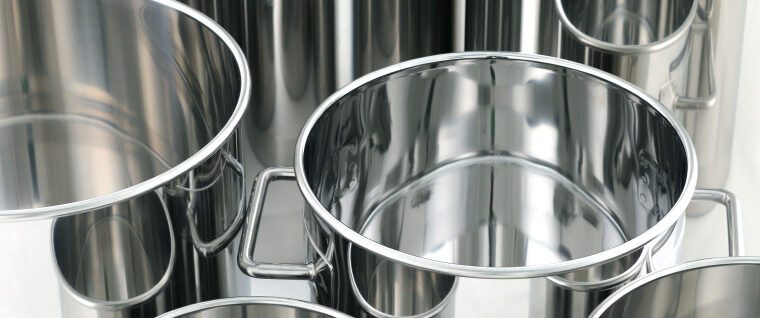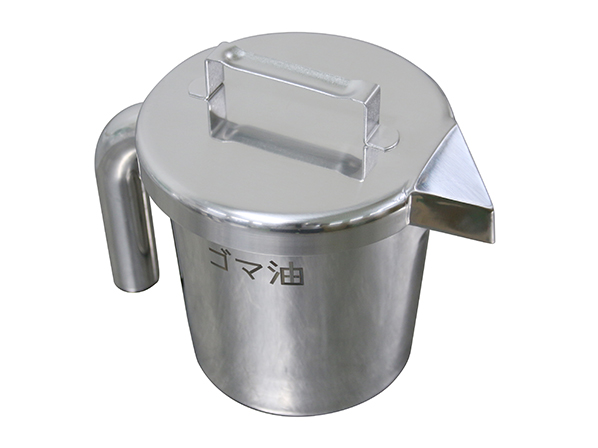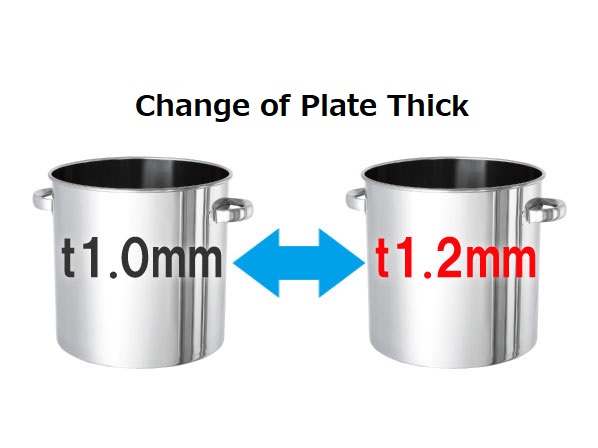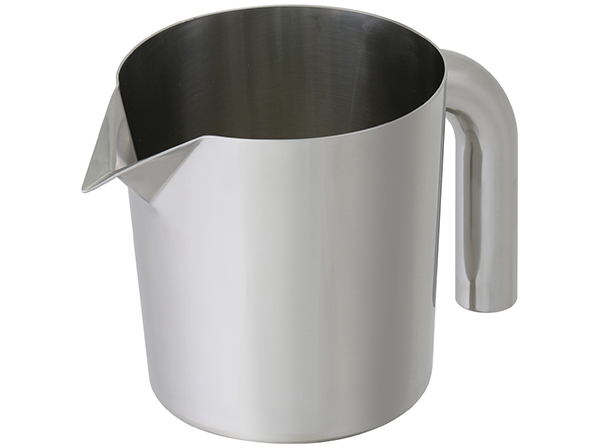
What is electropolishing?
Electropolishing is a polishing method in which metal ions are eluted from the metal surface to smooth the surface.
This process adds functions to the metal surface such as “removing oil, buffing powder, and other contaminants” and “inhibiting the adhesion of microorganisms.
For stainless steel, it also increases the chromium concentration on the metal surface and improves corrosion resistance.
Electropolishing is essential for pharmaceutical manufacturers who seek to avoid contamination and corrosion resistance from the surface, from the perspective of GMP and validation.

When electrolytic polishing is applied, the surface of the metal will melt in a wisp.
It does not melt so much that you can tell by touching it with your hand that it has become flimsy. The thickness of the surface is about 1/3 of a sheet of copy paper. (20 to 30 μm)
The surface is thinly melted to add functionality, so it may be easy to imagine it as “reverse plating”.
Advantages of Electropolishing
Electropolishing has the following advantages
- Removes stains that cannot be removed by normal cleaning
- Resistance to residual stains and easy removal of stains
- Improves corrosion resistance and rust resistance
Removes dirt that cannot be removed by normal cleaning
This product can remove (degrease) oil stains from stainless steel rolled, pressed, or buffed after welding.
These contaminants are embedded in the intricately deformed surface of stainless steel and are difficult to remove by normal cleaning.
Electropolishing melts the stains from the convex surfaces to a smooth surface, allowing the stains to surface and be easily removed.
Image of the surface
Material Surface
(Rough surface)

Buffing surface
(buffing powder, oil stains)

Electropolished surface
(smooth surface without contamination)

Less likely to leave stains and easier to remove

It is not only when the product is new that it remains clean.
As you can see from the image above, the electropolished surface is very smooth and has a smaller surface area.
Compared to the buffed surface, where the surface is uneven and has many small gaps, the new surface remains clean and easy to remove dirt even after repeated use and washing.
In addition, research conducted by the U.S. Department of Agriculture has shown that electropolished surfaces are less likely to retain biofilm (a collection of microorganisms).
Thus, electropolishing can easily maintain hygienic metal surfaces.
Improved corrosion resistance and rust resistance
As with the opening sentence, electropolishing increases the concentration of chromium on the metal surface. This is called chromium richness, and the metal surface is then covered with a strong passive film, which improves corrosion resistance.
The passive film prevents the iron contained in stainless steel from combining with oxygen (i.e., rusting). This is inherent in stainless steel itself, but the chromium richness makes it stronger.
Disadvantages of Electropolishing
Electropolishing itself does not have any negative effects on metal surfaces, but it does have a secondary disadvantage (risk).
- Expensive.
In our case, the price is about 2 to 3 times that of a buffed container.
There is a risk of electrolytic solution getting into the gaps. - It is necessary to consider the application of electrolytic polishing from the design stage, and to make a structure with a small number of gaps.
Are there different grades of electrolytic polishing?
Electropolishing has no direct disadvantages and is a good thing, but if the proper technique is not used, the desired effect may not be achieved.
Have you ever had any of the following problems with electropolished stainless steel containers?
- The container cannot be used without repeated washing.
- White tablets became dirty and blackish.
- Red rust (rouge) occurred.
These phenomena are caused by insufficient electropolishing.
The difference is caused by the way electropolishing is applied.
As a stainless steel container manufacturer, we would like to introduce our commitment to electropolishing.
General Electropolishing Methods

Electrode plates are placed on both sides of an electrolytic tank containing electrolytic solution (a mixed acid solution of phosphoric acid and sulfuric acid), and the product is placed between them.
When the product is connected to the + electrode and the electrode plates to the – electrode, an electric current flows through the electrolytic solution and the product is electropolished.
This method is suitable for electropolishing small parts, but not for stainless steel containers such as those we handle.
Although it is desirable to apply electropolishing firmly to the inner surface, which is in direct contact with the contents, with this method, the electric current flowing to the inner surface is weak, which means that electropolishing can only be applied weakly.
How Nitto Kinzoku Kogyo Electropolishes for High Grade Finishes

Nitto Kinzoku Kogyo uses a method that allows for firm electrolytic polishing to be applied to the inner surface of the container.
The difference from the general method is in the electrode plate.
Electropolishing is performed using special electrode plates that are dimensionally matched to the inner surface of the container.
This allows for stronger and more uniform processing, and the container is finished by taking full advantage of the benefits of electropolishing.
We are able to provide dedicated electrode plates tailored to each container because we are able to perform the entire process of container design, production, and electropolishing.
This is the secret to Nitto Kinzoku Kogyo’s high-grade electropolishing.
We have delivered many electrolytic polishing products to pharmaceutical companies







































